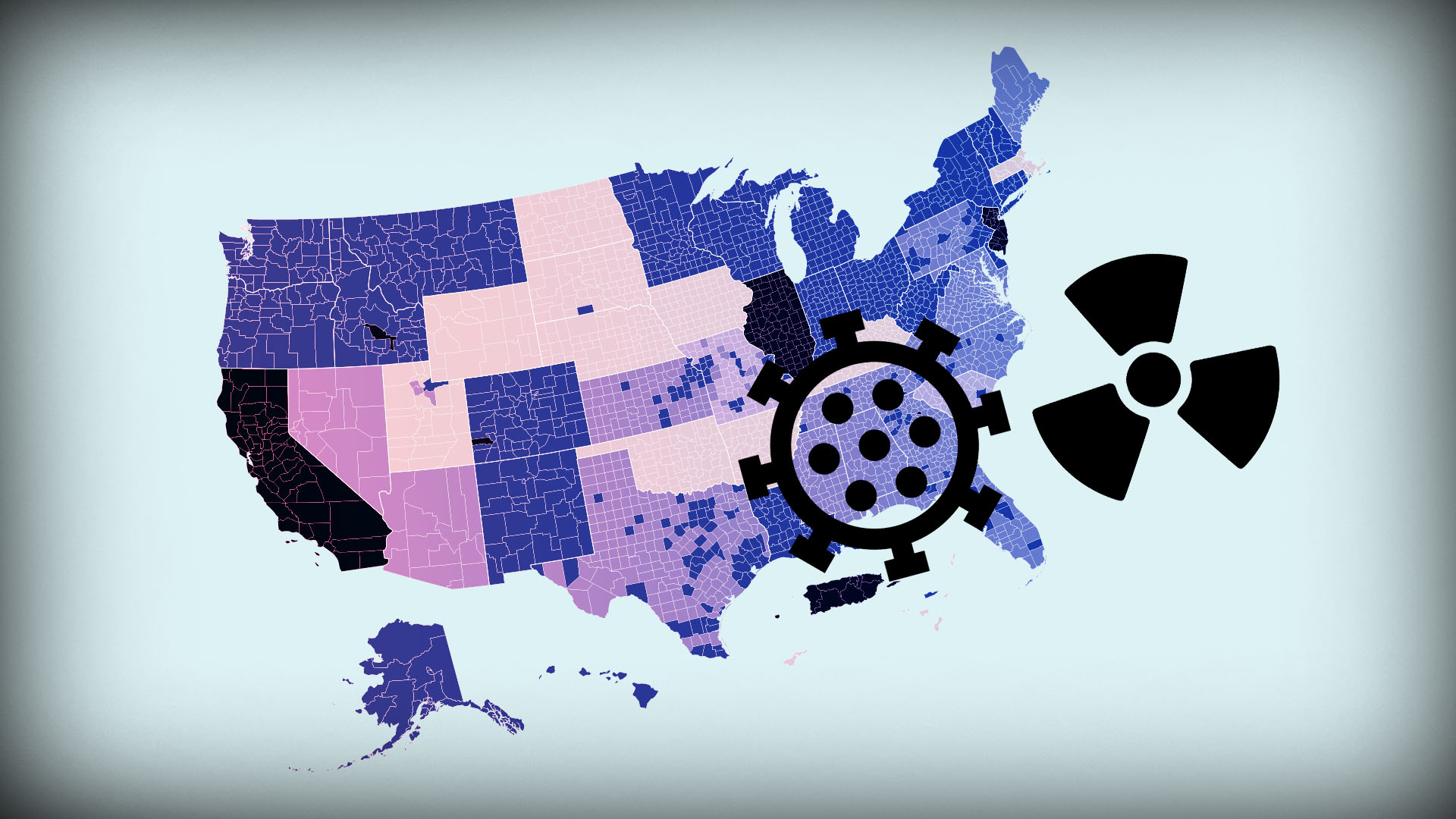Urgent Action Needed to Reduce Risk of Nuclear War
Most people believe the risk of nuclear war ended with the Cold War in 1991. Unfortunately they are wrong. If anything, this risk is even greater today.
First, the U.S. and Russia have continued dangerous practices from the Cold War, particularly keeping nuclear weapons on high alert, known as “launch on warning” status. To avoid losing their nuclear weapons through a surprise attack, each country will launch its missiles immediately if it believes the other has initiated an attack. This is inherently dangerous.
In the case of an apparent attack, the U.S. or Russian president has only 20 minutes to decide whether to launch missiles in retaliation. Obviously mistakes can be made. Historically there have been several false alarms, “close calls” where catastrophe was averted only by cool heads and good luck. We cannot rely on good luck lasting forever.
Factors contributing to an increased risk of nuclear war include: The number of countries with nuclear weapons has grown and some are expanding their arsenals; the end of arms control agreements; the introduction of new types of nuclear weapons; and changing attitudes toward the possible use of nuclear weapons. Perhaps most dangerous of all is the lack of engagement on risk reduction measures among the nuclear armed countries.
While the U.S. and Russia, and now North Korea, get most attention, there are now nine countries with nuclear weapons. Of particular concern are India and Pakistan, where tensions remain at dangerous levels.
Nuclear war between these two would have devastating consequences not only for them but globally through a “nuclear winter” (the impact of dust and soot on the climate). It should be a priority to help India and Pakistan establish mutual risk reduction arrangements.
If the New Strategic Arms Reduction Treaty (START) between the U.S. and Russia is allowed to expire in 2021, this will result in loss of arms control transparency and verification between the two countries, adding to the current arms race and heightening tensions. President Vladimir Putin is seeking to extend New START but so far President Donald Trump has declined.
President Trump has suggested trilateral arms control arrangements including China. This is not realistic for New START in its present form and in the time available. It is imperative to extend New START first. Then the U.S. and Russia can engage with China and the other nuclear-armed countries in negotiations for new arms control agreements.
A dangerous development is the introduction of new types of nuclear weapons. For example the U.S. has just deployed a low-yield submarine-launched weapon. The rationale is to deter “limited nuclear escalation,” apparently in response to a supposed Russian doctrine of “escalate to de-escalate,” by which Russia might use low-yield weapons to deter U.S. intervention in a regional conflict.
Russia denies having such a doctrine. Russia is developing new weapon types such as hypersonic missiles, a nuclear “mega-torpedo,” and nuclear-powered cruise missiles. While much of this is exaggerated, clearly new arms races raise tensions and are destabilizing.
The most serious aspect of these developments is that evidently both sides are planning to make nuclear weapons more usable. To date the ultimate barrier to nuclear war has been the “taboo” against nuclear use, reinforced by the threat of mutually assured destruction (aptly named “MAD”). Those planning for reducing the nuclear threshold believe that a limited nuclear war is possible. This is dangerous in the extreme.
If a nuclear conflict starts, in the resulting conditions of chaos, confusion and terror, there is no basis for optimism that nuclear escalation can be limited. No one knows when and how a nuclear war can be stopped.
All this illustrates the urgent need to establish high-level engagement on strategic stability issues, to enable the U.S. and Russia, and the other nuclear-armed countries, to clarify misconceptions and develop practical risk reduction steps.
What can be done? It is essential to get governments off the mindset that nuclear weapons are indispensable to security, and that disarmament is unrealistic and unattainable. The attitude of political leaders must be: How can we work together to reduce the risks of nuclear weapons and find safe pathways to eliminate them?
There is an immediate need to convince the nuclear-armed countries that practical risk reduction steps are urgent and do-able. These include extension of New START, establishing ongoing high-level engagement on strategic stability, and de-alerting of nuclear weapons.
It is also essential to strengthen national controls over the authority to use nuclear weapons. A truly game-changing step would be for each nuclear armed country to declare it will not be the first to use nuclear weapons (“no first use”), that nuclear weapons are retained only to deter their use by others. This is the declared position of China and India, and is supported by key Democrats in the U.S.
In the current absence of leadership on these issues from Washington, there is a need for middle powers, such as South Korea and my country, Australia, to work together to promote the outcomes that are so vital to humanity’s future.
John Carlson is a former senior Australian government official, and was director general of the Australian Safeguards and Non-Proliferation Office from 1989 to 2010. He is currently non-resident senior fellow with the Vienna Center for Disarmament and Non-Proliferation, and a member of the Asia-Pacific Leadership Network for Nuclear Non-Proliferation and Disarmament (APLN). This article is published in cooperation with the APLN.
This article was first published in The Korea Times on 19 February 2020 and is part of dedicated, regular column with analysis by APLN members on global issues. You can access the original post here.
Image: Pixabay stock.




